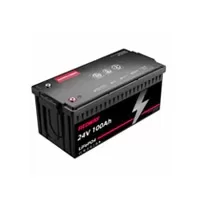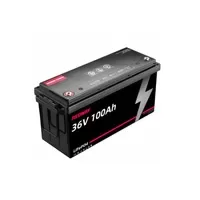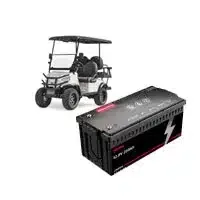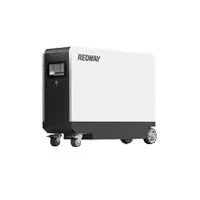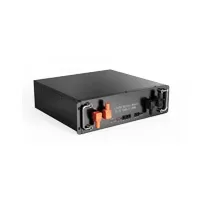Unleashing the power of electric motors is a thrilling endeavor, but when it comes to choosing the right battery, things can get a little…volt-tangled. If you’ve ever wondered about using a 60V battery on a 48V motor, you’re in for an electrifying ride! In this blog post, we will explore the ins and outs of voltage compatibility between batteries and motors. So fasten your seatbelts (or rather, tighten those safety goggles), as we dive into the shocking world of electrical currents and discover if mixing volts is truly electrifying or just plain risky. Let’s rev up those engines (metaphorically speaking) and find out if it’s time to give your motor some extra juice!
Understanding the difference between voltage and wattage
Voltage and wattage, two terms that often leave us scratching our heads in confusion. But fear not! We’re here to shed some light on this electrifying topic.
First things first, let’s clarify the difference between voltage and wattage. Voltage refers to the electrical potential difference or force that pushes electrons through a circuit. It’s like the pressure behind the flow of electricity. Wattage, on the other hand, is a measure of power or energy consumed by an electrical device over time. Think of it as how fast or slow you’re using up your energy.
Now, why does understanding these terms matter when it comes to batteries and motors? Well, mismatching voltages can be problematic because they directly affect how much power is supplied to the motor. If you use a higher voltage battery on a lower voltage motor without proper regulation or adjustments, you risk overwhelming your motor with excessive power and frying its delicate components.
But wattage also plays a crucial role in this equation. Even if you manage to match voltages correctly but fail to consider wattage compatibility between your battery and motor, you may still encounter issues such as reduced performance or even damage due to insufficient power supply.
So remember: while voltage determines the force behind electric flow, wattage measures how much energy is being used up by your devices. Both factors are important considerations when connecting batteries with motors for optimum performance and safety.
The effects of using a higher voltage battery on a motor
The effects of using a higher voltage battery on a motor can be both beneficial and potentially problematic. When you connect a 60V battery to a 48V motor, the increased voltage can lead to an increase in power output. This means that your motor may run faster or have more torque, depending on its design.
However, it is crucial to consider the limitations and risks involved. Using a higher voltage battery than recommended by the manufacturer can put excessive strain on the motor’s components. The increased voltage could cause overheating, which may result in damage or even failure of the motor over time.
Furthermore, using an incompatible battery could also affect other electrical components connected to the motor, such as controllers or sensors. These devices may not be designed to handle the higher voltage, leading to malfunctions or potential safety hazards.
It is essential always to consult with experts or follow manufacturer guidelines when considering using different voltages for your electric motors. They will provide valuable insight into whether such modifications are feasible and safe for your specific setup.
Finding alternative solutions like upgrading your entire system (including both battery and motor) might be preferable if you require more power rather than risking damage by mismatching voltages.
Risks and safety precautions to consider
Risks and safety precautions should always be top priorities when considering using a higher voltage battery on a 48V motor. While it may seem tempting to increase the power output, there are several factors that need careful consideration.
Using a higher voltage battery can potentially overload the motor. The increased voltage could put excessive strain on the internal components, leading to overheating or even permanent damage. This is especially true if the motor is not designed to handle voltages beyond its recommended range.
Another risk to consider is compatibility issues between the battery and motor. Different manufacturers may have specific requirements for their products which must be followed for optimal performance and safety. Mixing incompatible components could result in unpredictable behavior and potential hazards.
It’s also important to note that using a higher voltage battery may void any warranties or guarantees associated with the motor. Manufacturers typically design their products based on certain specifications, including voltage ratings. Deviating from these specifications could invalidate any protection plans you have in place.
To mitigate these risks, it is crucial to consult with experts in the field before attempting any modifications or upgrades. They can provide valuable insights into whether using a higher voltage battery is safe and appropriate for your specific setup.
Additionally, following proper installation procedures outlined by both the battery and motor manufacturers is essential for ensuring safety. This includes correctly connecting all wires and cables, securing them in place, and conducting regular maintenance checks.
It’s worth noting that alternative solutions exist if increasing power output is desired without compromising safety or risking damage to your equipment. These alternatives might include upgrading other components of your system such as controllers or gearboxes rather than solely focusing on increasing battery voltage.
While using a 60V battery on a 48V motor might seem like an easy way to boost performance, it comes with significant risks that should not be overlooked. Safety precautions must always take precedence over short-term gains in power output.
Compatibility of different voltage batteries and motors
Compatibility of different voltage batteries and motors is an important consideration when it comes to ensuring optimal performance and safety. While it may be tempting to use a higher voltage battery on a 48V motor, there are several factors that need to be taken into account.
Using a higher voltage battery can potentially overload the motor. Motors are designed to operate within specific voltage ranges, and exceeding these limits can lead to overheating or even permanent damage.
Additionally, mismatched voltages can also affect the overall efficiency of the system. A motor that is not designed for a higher voltage may not be able to utilize the extra power effectively, resulting in wasted energy and decreased performance.
Furthermore, compatibility issues between different voltage systems can also arise. For example, connectors and charging systems may not be compatible between a 60V battery and a 48V motor, making it difficult or impossible to properly connect or charge the battery.
It is always recommended to consult with the manufacturer or an expert in order to determine if using a higher voltage battery on your specific motor is safe and feasible. They will have valuable insights into potential risks as well as any possible workarounds or modifications that may need to be made for compatibility.
While it may seem like using a higher voltage battery could provide some benefits such as increased power output, it is crucial to consider compatibility issues and potential risks before doing so. Taking proper precautions ensures both optimal performance and safety for your motor system.
Alternatives to using a higher voltage battery
Alternatives to using a higher voltage battery
If you’re considering using a higher voltage battery on your 48V motor, it’s important to explore alternative options that could potentially be a better fit for your needs. Here are some alternatives to consider:
1. Use a lower voltage battery: Instead of risking damage or safety issues by utilizing a higher voltage battery, opt for a battery with the same or lower voltage as your motor. This ensures compatibility and reduces the chances of encountering any problems.
2. Upgrade your motor: If you’re looking for more power without exceeding the recommended voltage range, upgrading your motor may be a viable solution. Consult with an expert in electric motors who can guide you towards selecting a higher-powered motor that is compatible with your desired specifications.
3. Explore other accessories: Rather than solely relying on increasing the voltage of your battery, consider other accessories that can enhance performance without posing potential risks. For example, investing in advanced controllers or efficient gear systems can optimize power output within safe parameters.
4. Seek professional advice: When it comes to compatibility and electrical systems, consulting with professionals who specialize in batteries and motors is always advisable. They possess the expertise needed to assess your specific requirements and provide tailored recommendations based on industry standards and best practices.
Remember, when tinkering with electrical components like batteries and motors, safety should always remain paramount. It’s essential not only to protect yourself but also prolong the lifespan of these costly investments.
In conclusion (just kidding!), exploring alternatives before resorting to using a higher voltage battery on a 48V motor is key in ensuring optimal performance while minimizing risks associated with incompatible equipment configurations!
Expert opinions and recommendations
Expert Opinions and Recommendations:
When it comes to using a higher voltage battery on a 48V motor, expert opinions vary. Some experts believe that it is possible to use a 60V battery on a 48V motor with certain precautions in place. They argue that the slight increase in voltage may provide a small boost in performance without causing significant damage.
However, other experts strongly advise against using a higher voltage battery on a lower-voltage motor. They warn that this can lead to overheating, excessive wear and tear, and even potential safety hazards. The increased voltage could put unnecessary strain on the motor’s components and potentially cause them to fail prematurely.
To ensure compatibility and safe operation, it is always recommended to use batteries of the same voltage as specified by the manufacturer for your specific motor. This will help maintain optimal performance while minimizing any risks associated with mismatched voltages.
If you are looking for ways to enhance your motor’s performance without jeopardizing its integrity or safety, there are alternative options available. Upgrading other components like controllers or gear ratios may offer better results without compromising the overall system compatibility.
When considering whether to use a higher voltage battery on your 48V motor, consulting with an expert is crucial. They can assess your specific needs and provide personalized recommendations based on their knowledge and experience.
Remember that every electric vehicle system is unique; what works for one setup might not work for another. So take into account all factors before making any modifications or decisions regarding your battery-motor combination
Conclusion
Conclusion
While it may be tempting to use a 60V battery on a 48V motor for increased power and performance, it is not recommended. The difference in voltage can have significant effects on the motor and pose serious risks if not handled properly.
Understanding the difference between voltage and wattage is crucial in this context. Voltage refers to the electrical potential difference, while wattage represents the rate at which energy is consumed or produced. Using a higher voltage battery means exposing your motor to excessive electrical potential, leading to overloading and potentially damaging its components.
There are several risks associated with using a higher voltage battery on a lower rated motor. It can lead to overheating of the motor due to increased current flow. This heat buildup can cause insulation breakdowns or even fire hazards if not managed carefully.
Furthermore, mismatched voltages can result in accelerated wear and tear of mechanical parts within the motor. Bearings, brushes, and other critical components might experience premature failure under these conditions.
To ensure safety when working with batteries and motors, it’s important to consider compatibility issues beforehand. Always consult manufacturer specifications for both your battery and motor to determine their recommended operating parameters.
If you’re looking for alternatives that offer improved power without risking damage or compromising safety standards, consider upgrading your entire system rather than just swapping out batteries. Investing in a higher-rated motor specifically designed for greater voltages will provide better results without jeopardizing performance or reliability.
Expert opinions strongly caution against using batteries with differing voltages from what’s specified by manufacturers as this could void warranties or worse yet lead to catastrophic failures during operation.
When considering whether you can use a 60V battery on a 48V motor – erring on the side of caution is paramount! It’s always best practice to adhere strictly to manufacturer guidelines regarding compatibility between batteries and motors.



